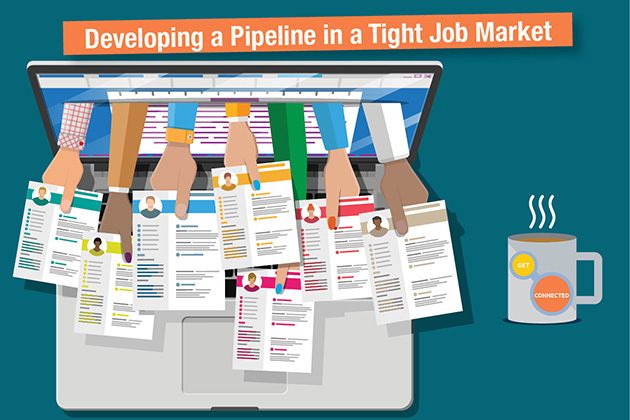
By Allison Madison, President, Madison Approach Staffing, Inc.
There is much currently being written about the labor shortage that is occurring and the natural tendency has been to blame generous Unemployment Insurance (UI) and Pandemic Unemployment Assistance (PUA) for demotivating job applicants. This explanation, perhaps, is overly simplistic as it doesn’t take into consideration that the labor shortage has been going on for quite a while in multiple sectors like manufacturing and health care. It also does not account for issues of childcare with remote learning, ongoing uncertainty concerning Covid safety protocols, large numbers of workforce exits by retirees who were lingering in the workforce and career shifting by people who are taking the opportunity to change careers. The reasons for the labor shortage are complex and it is far more productive for employers to implement new and creative strategies to develop an ongoing talent pipeline. The first step is to consider the following factors that can negatively affect a potential talent pool:
- Housing costs in suburban and metropolitan areas force low-income individuals to live further away, making commutes expensive and time-consuming. If compensation for a job is at the lower range, consider how the workforce will afford to live in the area, navigate public transportation or afford travel expenses such a maintaining a vehicle and paying for gas. Performing a reasonable compensation analysis will help you become more competitive.
- Minimum qualification requirements: Many low- to average-paying job postings require a 4-year degree as a minimum requirement, when it’s not necessarily relevant to the daily tasks of the position or commensurate with the cost of obtaining a degree. It’s time to assess if this credential requirement is creating a disparate impact in your hiring practices. By lowering the minimum requirements for a job to a more realistic level and investing in training, an employer can greatly increase the pool of job applicants.
- Childcare and transportation costs can act as a barrier to securing and maintaining a job. Old school thinking didn’t take these issues into consideration when employing someone as it was considered the employee’s personal problem if they wanted the job. Perhaps it’s time to be more flexible and creative by offering stipends as a recruiting and retention tool.
- Is there a career track to promotions, training and ultimately higher compensation? Employees are more willing to start at the low end of a career ladder if there is opportunity to grow with the company. A career development path provides motivated employees with an ongoing mechanism to enhance their skills and knowledge that can lead to lifelong skill development, promotions or transfers and increased confidence. Also introducing them to a prospective mentor is a great recruiting tool and company differentiator.
- Expand the recruiting net to a diverse workforce. Employers who make accommodations in the workplace for employees with disabilities make the work culture more inclusive and better for everyone. For example: putting in a ramp makes your workplace accessible to someone in a wheelchair, but also a mom with a stroller or a senior who can’t handle stairs, or someone injured on crutches. Rather than thinking of these accommodations as a cost, think of them as customer service. Additionally, Gen Z are on the lookout for these types of accommodations.
- Workplace flexibility has been accelerated by the pandemic and the increase of people working remotely from home. The Covid shutdown demonstrated that, in many cases it is possible to work efficiently from home. So while the workforce will be going back to the office, there is room for flexibility, especially when considering transportation and family caretaking issues.
- Paying a liveable wage: The most expensive part of of running a business for an employer is labor and the pressure to contain wages, benefits and the number of workers is high. But this is at odds with the needs of the worker to have a livable wage. If the job has high turnover or goes unfilled it’s time to assess the the job description and make sure the job is (1) still in alignment with business outcomes (2) the compensation is still competitive with the title, location and industry.
Building and maintaining a talent pipeline in a tight job market is extremely challenging and requires creative tactics and the employers who are succeeding have made a long-term commitment to changing old paradigms. It is vital to a strong economy and the success of all. Lead on.


